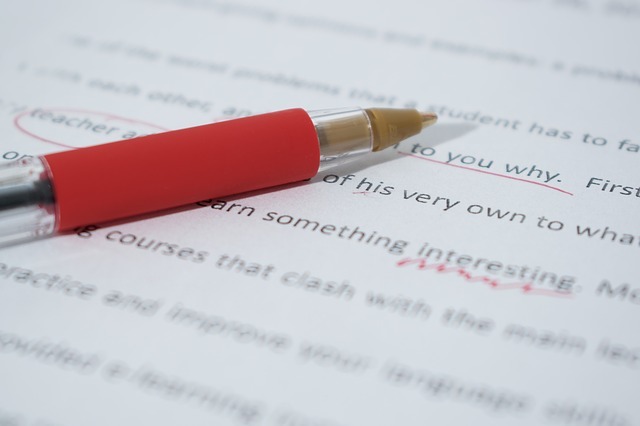How to Write a Descriptive Essay
Essay writing is a task which poses an immense challenge to many students. This is because it not only has many requirements but also requires one to have professional writing skills to produce a top-notch paper. Additionally, many students find it hard to distinguish the type of paper they are writing. Hence, they end up producing the wrong article. Professors and instructors often give college and university students writing assignments. Thus, it is upon you to ensure you know and understand the distinction in the various types of essay writing tasks. Cody Rhodes a professional writer at Essay Zoo will clarify what a descriptive essay is and the goal or objective of writing one.

What is a descriptive essay?
Before we go deeper into descriptive essay writing tips, you need to know what a descriptive essay is. A descriptive essay is a type of academic writing which involves describing a specific place, event, or person to the readers while creating a portrait in their minds by engaging their senses: touch, sound, smell, sight, and taste. Ability to do this guarantees you success. And before you write your descriptive essay, you need to lay the foundation of the entire work. Examples of a descriptive essay you may found on different Essay Writing Service.
So, to learn how to write a descriptive essay about a place, event or person consider the following tips.
Choose a topic
As mentioned earlier, a descriptive essay is an article which describes a specific event, person, or place. Its focus is on particular person, place, or event. So, you need to select a topic which you can write much about. Your professor(s) may give you one, or they may leave it up to you to choose. So, ensure you pick a topic which allows you to convey your opinion about it through your description of it and how you want things laid out for the audience. For instance, Barrack Obama, a school, or your birthday.
Also, ensure you structure your essay in a way that helps your topic to have meaning or make sense. A description of an event has paragraphs arranged chronologically whereas a description of a person or a place has paragraphs arranged generally so that it allows you to go deeper into the specifics. The introduction paragraph of your essay should set out the key points you will discuss in your article as it sets the tone for the rest of the paper.
Do statement
Now that you have chosen a topic, develop a thesis statement. A thesis statement is a statement which holds or supports the argument in the topic of your paper. Additionally, it lays out the purpose of the essay. It is prominent throughout the entire paper. Hence, when creating it, you need to make it precise, avoid clichés, and include it in the introductory paragraph.
Sense right
The audience will be able to comprehend what your paper is about if you create an image in their minds by engaging their senses. So, how do you get the senses right? Take a sheet of paper and partition it into five columns. Note down all the senses. This will help you sort your thoughts and ideas as you elucidate your topic. Write any feelings or sensations which relate to the topic you are writing about. Back up your thesis statement by providing full sensory details. Utilize literary tools to perfect your paper such as personification, similes, and metaphors.
Write an outline
Once you get the senses right, you can proceed to the next step which is creating a descriptive essay outline. A descriptive essay outline is essential in writing a descriptive essay as it not only acts as a road map to your essay but also simplifies the writing process. Additionally, it helps to show how the structure of your paper ought to appear. Outline is very important when writing a resume but make it informative as shown on resumethatworks.com. A descriptive essay outline constitutes three main components: the introduction body, and conclusion.
- Introduction. Develop a strong hook which will capture the attention of your audience. They need to be attracted to your paper by reading the introduction. Also, remember to include the thesis statement.
- Body. Writing a descriptive paragraph(s)is not easy if you do not have a thesis statement. This is because it is where you provide support or backup the thesis statement (shows the purpose of your essay). So, ensure you begin each paragraph with a topic sentence. Use transitional phrases to show the readers that your essay is continuous.
- Conclusion. Conclude your paper with a summary of your main points. Restate your thesis statement.
Create a conclusion
The conclusion of your descriptive essay is fundamental as it shows the reader(s) that your article has come to an end. So, when creating it, ensure you provide a summary of your key points. Restate your thesis statement. Also, remember not to include any new information which you have not mentioned in your paper.
If you do not know how to structure a descriptive essay, follow the format above or have a look at some of the descriptive essay examples written by other students or professionals.
Polish and finish
You can begin writing your essay now that you have a guiding map (outline) you can use. After writing your paper, ensure you take a break then resume to revise it. Go through it and eliminate all the mistakes you may have made during the writing process. Polish it in a way that ensures you have met all the writing instructions and requirements.
In conclusion, writing a descriptive essay is not hard as long as you know the purpose it seeks to serve. Above are some tips you can use to learn how to write a descriptive essay.